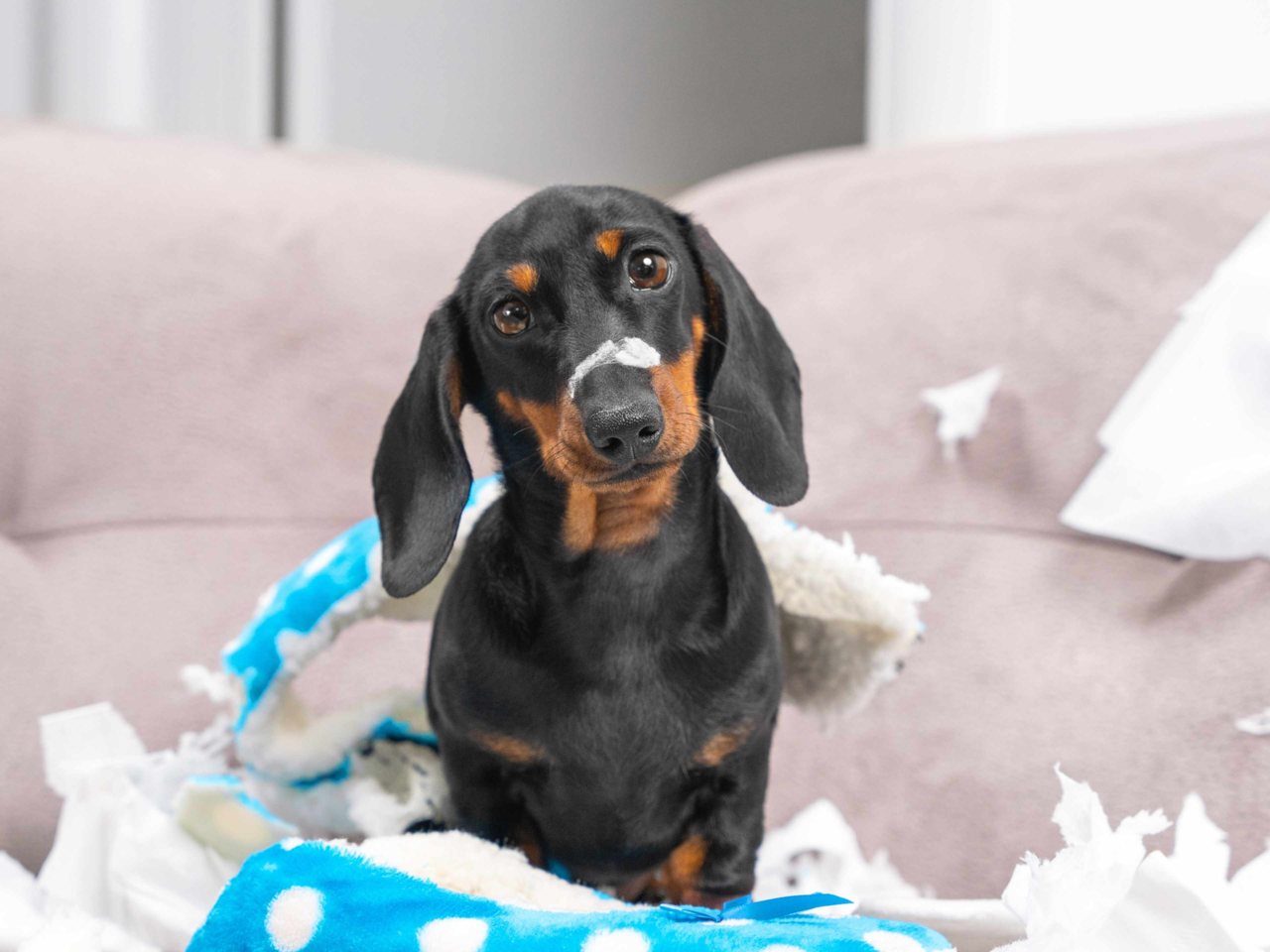
Common Puppy Training Mistakes
Did you know the first 21 weeks of your puppy’s life play a big part in the development of their future personality and behaviour? That’s why puppy training is so important in helping your puppy become a well-mannered, well-adjusted adult. Get your life-long relationship off to the best start by avoiding these common puppy training mistakes.
1. Not setting boundaries
In a litter, puppies always have other dogs to keep them in check, letting them know where they can and can’t go, and what behaviour is acceptable and what isn’t. Play to your puppy’s natural environment by setting boundaries from day one. Keep them in the same room as you at all times. Giving them free reign of your home could spell disaster for your furniture and favourite things. A good way to keep them (and your home) safe is by restricting them to one room with you. This teaches them that it’s ok to explore, but only within the space that you’ve defined for them.
Puppyhood is also the best time to teach your puppy not to jump on the sofa and you (and other humans) uninvited. Although you might be ok with it now when they’re small, you might not be when they’re fully grown.
2. Not socialising your puppy enough
If the first 12 weeks of your puppy’s life are only spent with you and your family, it’s natural that they’re going to think all humans look like you. Which means when they meet other people, there’s a risk that they’ll be scared, anxious or even aggressive. To combat this, aim to take them for at least 3 short walks a day where they can meet a wide range of people of all ages, shapes, sizes and skin colours. Puppy classes are also a great way to meet new people in a safe and controlled environment.
Puppies should also be gently exposed to common outdoor things like prams, bikes and cars. When they notice anything new when you’re out and about, give them a treat to help create positive associations for your pup.
3. Not letting your puppy play with older, bigger dogs
It can be a bit scary watching your little pup rough housing with bigger dogs (with bigger jaws!). But it’s an essential part of their development. Older, more mature dogs can help your puppy learn appropriate behaviour and manners. Ask some friends who have well-behaved, friendly older dogs for a puppy playdate. This way you have more control over the playing situation so it stays positive.
When your puppy has had all their vaccinations (this is usually complete by 16 weeks) and is a bit older (4-6 months), you could consider taking them to a dog park. They’ll be able to watch older dogs play and join in themselves. It’s worth getting recommendations of quieter dog parks with friendly dogs rather than taking them to the first one you find.
4. Not having a home alone plan
There will come a time when you can’t be at home all the time with your puppy - and they need to be comfortable and confident when this happens. A stressed, unhappy puppy is a noisy and destructive one.
The best way to ensure your puppy is happy by themselves is to crate train them. This gives them a safe, cosy spot to call their own, especially when you fill it with a bed, toys, a water bowl and treats. Start by leaving them alone for 10 minutes and work up from there. (Although puppies shouldn’t be left alone for longer than 3-4 hours.)
5. Not using a lead
Teaching your puppy to walk nicely on a lead is essential. Use one as soon as you bring your puppy home. To begin with, you can use the lead at home and walk them from room to room. This helps them get used to the feeling of being clipped onto a lead. If you leave it too long to train your puppy with a lead, it’ll be much harder as they’ll resist it more.
6. Not using positive reinforcement
Puppies are energetic and exhausting, so it’s not surprising that sometimes you might use an angry or exasperated tone of voice. But regularly using that tone can teach your puppy to fear you, and that’s not healthy for your relationship. Instead, you want to teach your puppy to respect you and listen to your instructions.
This is where positive reinforcement comes in. Every time they do what you ask them to (like sit, stay or come), they’re rewarded with praise, a treat or a special toy and playtime. This helps your puppy form positive associations between their good behaviour and a reward.
7. Not knowing your puppy’s toilet signs
As well as crate and lead training, a big part of puppy training is toileting. It takes time and patience, but it’s helped along by understanding what your puppy’s trying to tell you. First, limit the space in your home your puppy has access to. This allows you to keep an eye on them and avoid any accidents.
Second, watch for signs that your puppy needs to go to the toilet. These include:
- Circling
- Sniffing the ground
- Whining
- Finding somewhere to hide
If you spot them starting to go inside, distract them with a loud noise then pop them calmly on their lead and take them outside to their toilet spot. Training pads can be really helpful if you need to leave your puppy alone for a few hours. Put them in a designated toilet spot, like the garage, kitchen or bathroom (or anywhere without a carpet) so your puppy has somewhere to go if they can’t hold on.
Hopefully this guide helps you avoid common puppy training mistakes. If you need any further help or have a question we haven’t answered, contact our friendly Petdirect Customer Care team on 0800 200 240 or email support@petdirect.co.nz.